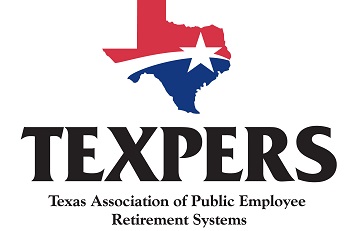Last year, the Teacher Retirement System (TRS) of Texas –oddly – came under fire from the Wall Street Journal for the success of its private equity returns. This year, Harvard University has hired away one of TRS’ private equity team members to head its PE portfolio.
As the Boston Globe article says, Richard Hall will join Harvard University's endowment fund after managing $14 billion in private equity for TRS for six years.
We mention this only to discuss a point.
Successful money managers with great track records are in high demand. The skills and techniques that Hall and others develop in the course of their work at a successful public employee pension system are desired by other organizations, like university endowment funds, large hedge funds, or mutual funds.
Whenever we see news stories about the bonuses paid to top money managers and staff at public pension systems, and then we see comparisons to average salaries of teachers or other public employees, we wince a bit like everyone else. But, we know that those bonuses are unbelievably small compared to what other money managers and staff receive at private sector money management firms. We read recently of $20 million salaries for top executives at PIMCO, for instance. (Inside the Showdown Atop Pimco, the World's Biggest Bond Firm, WSJ, Feb. 24, 2014).
But truly the market for those with skills and experience in managing money is highly competitive and there’s always an organization which needs a boost from those with fresh approaches and a winning track record. Harvard’s endowment fund is an incredibly prestigious group and it is our bet they pay handsomely, probably offering Mr. Hall (a Harvard graduate) a very sweet deal indeed.
In the world of money management, talent poaching is the name of the game. Texas is fortunate to have so many dedicated professionals at all its pensions, sometimes working with below-market compensation packages. We salute them all. – Max Patterson
Tuesday, March 18, 2014
Monday, March 10, 2014
Wilshire Report shows pensions continue trending in right direction
Since 2008 there have been numerous reports decrying the funded ratios of public employee pension funds around the United States.
Of course, 2008-09 were tough times for stock and bond market investors and the historic downward spirals offered the opponents of public employees’ defined benefit plans plenty of opportunity to knock them. Unfunded liabilities would break the backs of cities and states, they said (and continue to say in many cases).
The truth of the matter is that public employee pensions are long term investors and focusing on returns – and the subsequent consequences to a pensions unfunded liabilities – for a year or two or five or ten -- doesn’t make much sense to those in the industry. The time frames for most pension investments are 15-20 years and as long as the longer-term, multi-year trends for both returns and unfunded liabilities are positive, public officials should not be too concerned except in a relatively small number of cases.
Such is the situation we’re seeing with a national report by Wilshire Associates on the state of U.S. retirement systems. A few points from the survey of 111 pension plans that reported their returns to Wilshire, as reported in Asset International’s Chief Investment Officer:
Of course, 2008-09 were tough times for stock and bond market investors and the historic downward spirals offered the opponents of public employees’ defined benefit plans plenty of opportunity to knock them. Unfunded liabilities would break the backs of cities and states, they said (and continue to say in many cases).
The truth of the matter is that public employee pensions are long term investors and focusing on returns – and the subsequent consequences to a pensions unfunded liabilities – for a year or two or five or ten -- doesn’t make much sense to those in the industry. The time frames for most pension investments are 15-20 years and as long as the longer-term, multi-year trends for both returns and unfunded liabilities are positive, public officials should not be too concerned except in a relatively small number of cases.
Such is the situation we’re seeing with a national report by Wilshire Associates on the state of U.S. retirement systems. A few points from the survey of 111 pension plans that reported their returns to Wilshire, as reported in Asset International’s Chief Investment Officer:
- The aggregate funding rose three percent to 75% in 2013, from 72% in 2012.
- For 111 pension plans, assets grew 8% from $1.96 trillion to $2.12 trillion in 2013.
- The 111 plans’ aggregate funding shortfall decreased from $863.3 billion to $779.8 billion.
- The average assets-to-liabilities ratio was 70%.
- Only 8 had assets worth less than 50% of their liabilities.
All said, only 7 percent of the reporting pensions were in a truly concerning situation, with their assets less than 50% of liabilities. These might warrant some review and action by the people involved to ensure their future solvency, but they are certainly salvageable. All the other findings were very positive.
The best news from our perspective was the aggregate funding trend, up 3% in one year. In investing terms, the trend is your friend, and as long as the large majority of pension funds continue in this positive direction the din and cry for ‘pension reform at all costs’ will slowly fade – until the next historic market downturn. – Max Patterson
Subscribe to:
Posts (Atom)
